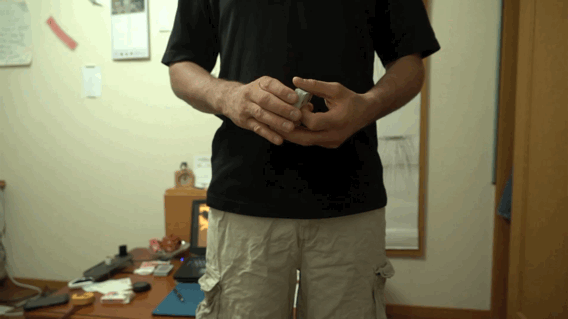Until July...
/It’s the end of the June posting cycle and thus time to say goodbye for a little bit.
It’s also the summer solstice. Always a good day to show someone some magic because, of course, it’s the day when the earth absorbs the most electromagnetic radiation from the sun and you can harness that in order to… well, do whatever you want, really.
Things are gradually opening up around me. Friends are making plans to get together and more performing opportunities are coming back day after day. And people seem desperate for interaction. it’s a good time to have something to show people. Don’t miss it.
It’s also a good opportunity to shift your style of performing. If you’ve felt stuck in the rut of doing boring ass card tricks for people, now is a good opportunity to say, “No, actually I didn’t learn many new card tricks during quarantine. I sort of took a break from that. Instead I was looking into some other stuff. It’s kind of magic related but a little… weirder.”
I’m shifting heavily into the writing of book number four at the moment. The last couple of months involved a lot of prepping and outlining, but the real writing starts over the summer.
Book number four! Holy shit. Someone wrote me a little while ago and did the math and estimated that between the site, the books, the magazine, and the newsletters, I have written the equivalent of 24 full-length books since the start of this site. I mean, I get that the writing one does for a blog is different than the writing one does for a book. But still. That’s a lot of writing about magic. Especially given the fact that I hate writing, and I only barely like magic.
See you in July.
I’ll leave you with what I consider a summer music classic. It’s Summertime Clothes by Animal Collective. It’s a rare song that romanticizes being hot and uncomfortable on a summer night. I’m not sure I’d love it as much as I do if it wasn’t so nostalgic for me. It’s about ditching your bed on a hot night to meet up with someone.
I’ve always been a big late-night frolicker. Starting as an 11 or 12 year-old, climbing out of my bedroom window to meet up with my friends—a bunch of sneaky little shadows, prowling the suburbs. Then as a teenager, sneaking out to meet up with my girlfriend for a moonlight walk or driveway make-out session. And up until now, as a grown-ass man, I still like getting together with people for late-night conversations, meals, or unsanctioned swims in my apartment complex’s pool.
So this song that really speaks to me. Great song. Great lyrics.








